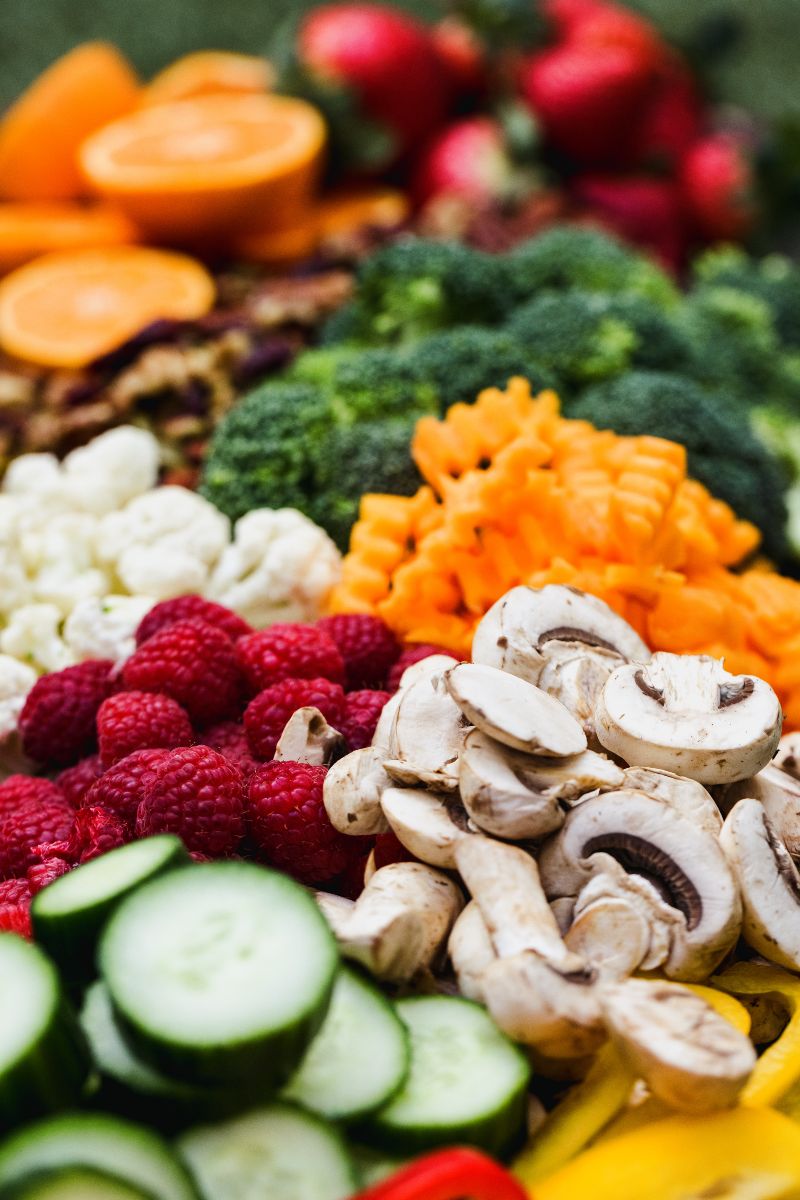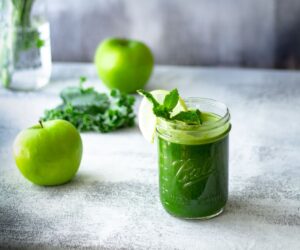And How Can We Help Prevent It ?
Here is some valuable information on the best anti cancer diet taken by Leigh Erin Connealy MD. This is a healthy approach using food to keep us disease free, allowing us to avoid genes being turned on that cause disease and show you how easy it is to protect your health.
Also included are some recipes from me and a Shopping List
Hippocrates, widely regarded as the Father of Medicine, famously said, “Let food be thy medicine and let medicine be thy food.” He was spot on. What we eat and drink could very well be the primary indicator of whether a person develops cancer, overcomes it or avoids it entirely. And eating the right types of food if you do find yourself battling cancer or another chronic disease is vital.
Think of the body as a machine that needs quality energy sources to run smoothly. The proper types of satiating protein, low-glycemic carbohydrates and healthful fats are the fuels that “machine” needs to function optimally. “Dead foods” like processed cookies, crackers, and macaroni and cheese are full of empty calories, the wrong type of carbohydrates, and a laundry list of hard-to-read and potentially problematic ingredients.
On the other hand, real food—fresh, organic fruits and vegetables, meats (particularly organ meats), nuts and healthy oils—can truly heal.
Let’s take a closer look at the foods you should eat for energy and wellness and those you should avoid at all costs.
Why a low-carb, moderate-protein, high-fat diet is best
For good health in general, particularly if you are following an anti-cancer diet, you’ll want to eat foods that are low in carbohydrates, moderate in protein and high in healthy fats. This way of eating is sometimes referred to as a ketogenic diet, and it completely changes the way your body uses energy.
Back in 2012, professor and researcher Dr Thomas Seyfried, PhD, published revolutionary findings that suggested cancer is a metabolic disease and, as such, has a metabolic cure. Expanding on the findings of Otto Warburg, who proposed that all cancers are a disease of energy metabolism, Dr Seyfried’s studies revealed that lab mice with brain tumours responded remarkably well to fasting and calorie restriction.
Dr Seyfried discovered that reducing or restricting carbohydrates “starved” cancer cells and stopped them from growing.
Normally, your body’s go-to energy source is glucose. Carbohydrates are high in glucose, so when you don’t eat many carbs, the body resorts to burning fat for fuel instead in a process called ketosis. In ketosis, the liver breaks down fat cells called ketone bodies to use as an alternate energy source. And because cancer cells use glucose for energy but can’t use these ketone bodies, it’s thought that the ketogenic diet can help “starve” these malignant cells.
You must consume very few carbohydrates to get your body into a ketogenic state. Instead, you fill up on healthy fats and proteins. A diet high in healthy fats promotes cell membrane health, which is important as cell membranes are the “gatekeepers” that allow nutrients into the cells and help flush waste products out of them. This way of eating is also anti-inflammatory, promoting gut health, weight loss and other positive health outcomes.
If you decide to try a ketogenic diet or a modified ketogenic diet, do so under the guidance of an integrative physician.
Foods to avoid if you want to be healthy
Whether you eat a vegan, vegetarian, ketogenic or modified ketogenic diet, one thing I recommend across the board is to eliminate sugar and all foods that metabolically turn to sugar when you digest them.
Avoid high-glycemic fruits, bread, rice, white potatoes, pasta, popcorn, candy, pies, cakes and crackers.
Drastically decreasing your intake of these carbohydrate-laden foods is thought to be one of the most foundational principles of any healthy anti-cancer diet.
Anything that promotes an allergic or inflammatory response in the body should also be avoided. How can you tell if you’re allergic to a particular food? If eating it makes you feel groggy, grumpy, tired or in a “brain fog,” you’re likely allergic or sensitive to that food. Talk to your practitioner about food allergy testing or try an elimination diet to uncover problematic foods.
Elimination diets are straightforward; you simply omit certain foods or food groups from your diet for a week or two and observe how you feel. To determine which foods are causing problems, slowly reintroduce each one into your daily diet, one at a time, and pay attention to how your body reacts.
In my clinical experience, most people are allergic to the “sensitive seven.” You’ll want to pay close attention to your body’s response as you begin eating these foods/food groups again.
Dairy products
Wheat
Sugar
Corn
Soy
Eggs (Note: often okay if organic)
Peanuts
Any foods that are particularly toxic in excess should be avoided as well. These include alcohol, caffeine, soda, fast food and processed foods.
Fried and grilled foods
Grilling over charcoal and frying foods with unhealthy oils can create cancer-causing compounds that damage DNA. To avoid this entirely, use a gas grill or bake, sauté, broil or steam everything you eat.
GMO foods: steer clear
Countless studies have tied genetically modified (GMO) foods to adverse effects on the body. GMOs have been closely linked to food allergies, leaky gut syndrome and several other health concerns.
My experience suggests that most people have issues with GMO foods. Whether or not you develop allergies or inflammation from these items, it’s best not to let yourself be a science experiment. Steer clear and choose non-GMO, organic foods whenever you can.
What about wheat?
Once upon a time, wheat was a healthy food. Unfortunately, wheat today barely resembles what our ancestors ate. Our soil has been depleted of vital nutrients, and many wheat varieties are now genetically modified.
It’s not surprising that after the widespread use of Roundup and these GMO seeds began in the early ’90s, a considerable uptick in celiac disease and other gluten sensitivities was seen across the United States. We use Round up here on crops in the UK as well before harvesting.
GMO wheat is full of gluten—one of the most inflammatory substances out there. Gluten can inflame the gastrointestinal (GI) tract, leading to leaky gut syndrome, and because most wheat is now highly processed, it instantly turns to sugar in the body. This rapid transformation causes blood sugar spikes and subsequent insulin surges. Inflammation and increased insulin are two main risk factors for cancer (and other serious health concerns, like diabetes), so eating impure, overly processed wheat is akin to throwing gasoline on a fire.
The only benefit of this whole fiasco is the wide range of gluten-free options that now exist in grocery stores and health food stores alike.
Be picky about dairy
Many dairy products sold today come from cows exposed to antibiotics and hormones, like recombinant bovine growth hormone (rBGH). If you consume conventionally raised beef and dairy products, you too are ingesting these antibiotics and hormones. These substances can be problematic for several reasons.
Antibiotics can kill off the beneficial bacteria in the GI tract, which hinders the function of the immune system. Growth hormones may disrupt your own hormones and increase insulin growth factor 1 (IGF-1). High IGF-1 levels may foster cancer growth, so avoiding these hormones is essential.
Some dairy products are still okay to consume In small quantities. For instance, a little organic sheep or goat cheese, You can also have raw goat cheese or raw goat’s-milk yogurt. Another option is nut milks and other nondairy alternatives.
Summary
Once you discover how wonderful real foods can make you feel—and begin reaping all the life-giving benefits these delicious foods have to offer—you’ll find that a low-carb, anti-cancer diet isn’t a punishment. It’s a tool for promoting your own health, longevity and wellness.
Lots of great information from Dr Connealy, so let’s put together a sample day.
Before breakfast
Drink 250ml lemon water or mint tea with lemon. You may also drink 50 ml wheatgrass juice if desired.
Breakfast
Green Juice
2 poached or hard-boiled eggs
1/2 avocado
Lemon juice, olive oil, seasoning dressing.
or smoothie with chia( fibre) flax( omega 3) hemp( protein) avocado, berries, and green powder.
Mid-morning
250 Green Tea
30 minutes before lunch
250ml 1/2 squeezed lemon in filtered water
Lunch
Green Juice
A selection of the following of which some can be prepped the night before,
1 cup steamed vegetables,
1/2 cup black beans
1 cup baby greens
1/2 cup cooked mushrooms
Sprinkle of sun dried tomatoes
1/2 cup quinoa
Some radishes
A little grated beetroot and carrot
1 heaped Tbsp hummus
Avocado
Sardines, anchovies or wild salmon if you not eating animal products in the evening.
Dressing Tbsp olive oil squeeze lemon juice clove crushed garlic
or Tamari sauce. ( tastes like soy sauce)
Mid Afternoon If you need a mid-afternoon snack but best avoided.
250ml Ginger Lemon tea or purified water
1 stick celery with almond butter or 1 cup alkaline broth
30 minutes before dinner
250ml purified water
Dinner
1 cup alkaline broth
1 fillet of wild salmon, herring, sardines , mackerel or anchovies
1 Tbsp Salad Dressing
1 cup greens
Juicing for detox,
One of the easiest ways to incorporate these healthful foods into your diet is by juicing. Juicing is recognised as a powerful detoxification tool, helping to eliminate metabolic waste and environmental toxins from the body. More and more people are joining the juice revolution to fight cancer or maintain good health in general.
Juicing can
Increase energy
Improve mood and sense of well-being
Reduce brain fog
Restore digestion
Booste immune system
Juicing also gives your body a break from digesting and metabolising solid food. Better still, juicing whole fruits and vegetables retains 95 percent of their nutrients.
Reminder to new readers to read my article featured on bridgetlouisenutrition.com on which produce needs to be organic but wash them all regardless.
Some recipes from me
Super green juice
2 large handfuls of spinach
1 Tbsp freshly squeezed lemon juice
2 sticks celery
1/2 cucumber
1 handful mint
1 apple or 1 kiwi
(Optional: Add 1/2 avocado or hemp powder, after you’ve juiced the produce.)
or warm options
Savoury alkaline broth
Makes 6 servings
Ingredients
2 cups green beans
1 chopped carrot
2 cups celery, chopped into 2-in. (5-cm) pieces
2 cups zucchini, chopped into 2-in. (5-cm) pieces
6–8 cups purified water
1 chopped onion
1 garlic clove
Method
Place the onion and garlic in a pan with oil and saute on medium heat, in a medium-sized saucepan.
Add the vegetables and water and bring to just below boiling. Simmer for 30 -40 minutes until carrot and celery are soft.
option to Strain the liquid, and discard the vegetables or keep them. The broth will keep in the refrigerator for 3 days and can also be frozen.
Salad dressing
Makes 6 servings
6 Tbsp MCT liquid coconut or olive oil
Juice of 1/2 lemon
1/2 tsp coconut amino acids or Tamari
1 Tbsp gluten-free, sugar free mustard (optional)
1 to 2 garlic cloves, pressed
Optional to add a cup of chopped coriander.
Whisk all the ingredients together in a small bowl until they are fully combined. Store in a glass container in the refrigerator for up to 4 days.
The ideal Shopping List
Small amounts of animal products
Organ meats/wild or grass-fed animal protein
Organ meats (liver)
Bone broth
Red meat (deer, grass fed lamb or beef)
Organic eggs from free-range or grass-fed chickens
Small, wild-caught fish ( anchovies, haddock, mackerel, salmon, sardines)
Organic green and non-starchy vegetables
Asparagus
Artichokes
Bean sprouts
Beets
Broccoli
Bok choy
Brussels sprouts
Cabbage
Cauliflower
Celery
Chinese cabbage
Chives
Collard greens
Cucumbers
Garlic
Green beans
Onions
Kale
Leeks
Lettuce (all kinds)
Mustard greens
Onions
Parsley
Radishes
Red and curly cabbage
Rutabaga
Rocket
Scallions
Sea vegetables (organic kelp, dulse, spirulina)
Shallots
Spinach
Sprouts
Watercress
Zucchini
Bell peppers
Eggplant
Mushrooms
Parsnips
Red potatoes
Squash (all kinds)
Sweet potatoes
Tomatoes
Yucca
Organic low-glycemic fruit
Avocados
Blackberries
Blueberries
Boysenberries
Lemons
Limes
Raspberries
Strawberries
Organic nuts and seeds (sprouted preferred)
Almonds
Cashews
Macadamia nuts
Pumpkin seeds
Sesame seeds
Sunflower seeds
Walnuts
Healthy fats and oils
Cacao butter
Coconut oil
Hemp seed oil
MCT oil
Olive oil
Fresh herbs and spices
Cilantro
Garlic
Ginger
Oregano
Parsley
Pepper
Rosemary
Turmeric
Plant protein powders unsweetened (for smoothies)
Chia seed
Cranberry
Hemp seed
Pea
Pulses
Edamame
Black beans
Chickpeas
Lentils
Healthy beverages
Fresh green juices
Ginger tea
Green tea
Pure water
Turmeric tea
Wheatgrass juice
Filtered water



